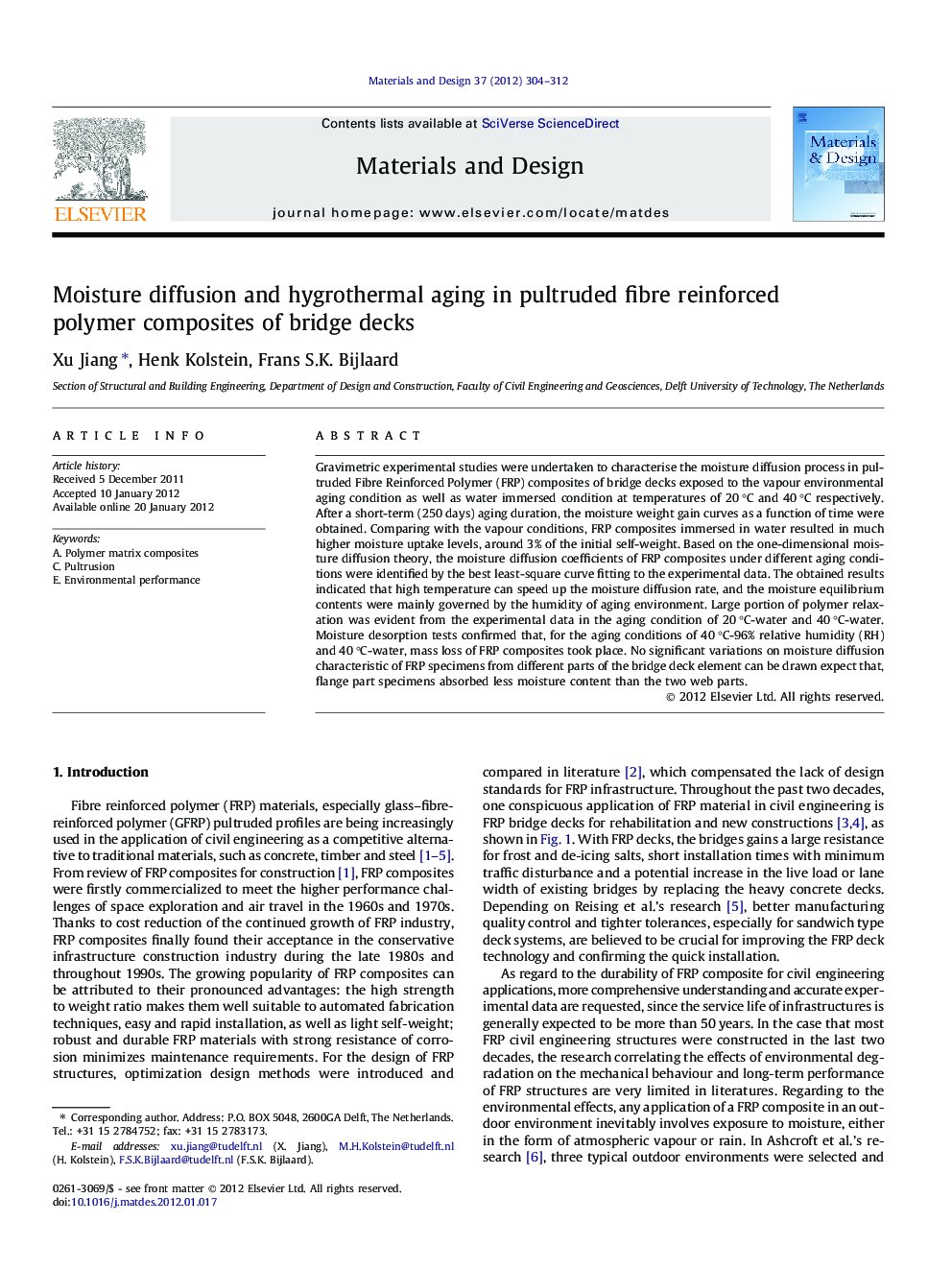| Article ID | Journal | Published Year | Pages | File Type |
|---|---|---|---|---|
| 830766 | Materials & Design (1980-2015) | 2012 | 9 Pages |
Gravimetric experimental studies were undertaken to characterise the moisture diffusion process in pultruded Fibre Reinforced Polymer (FRP) composites of bridge decks exposed to the vapour environmental aging condition as well as water immersed condition at temperatures of 20 °C and 40 °C respectively. After a short-term (250 days) aging duration, the moisture weight gain curves as a function of time were obtained. Comparing with the vapour conditions, FRP composites immersed in water resulted in much higher moisture uptake levels, around 3% of the initial self-weight. Based on the one-dimensional moisture diffusion theory, the moisture diffusion coefficients of FRP composites under different aging conditions were identified by the best least-square curve fitting to the experimental data. The obtained results indicated that high temperature can speed up the moisture diffusion rate, and the moisture equilibrium contents were mainly governed by the humidity of aging environment. Large portion of polymer relaxation was evident from the experimental data in the aging condition of 20 °C-water and 40 °C-water. Moisture desorption tests confirmed that, for the aging conditions of 40 °C-96% relative humidity (RH) and 40 °C-water, mass loss of FRP composites took place. No significant variations on moisture diffusion characteristic of FRP specimens from different parts of the bridge deck element can be drawn expect that, flange part specimens absorbed less moisture content than the two web parts.
► Moisture absorption and desorption tests are conducted on pultruded FRP composites. ► A modified one-dimensional moisture diffusion analytical model is developed. ► Moisture diffusion coefficients are obtained under four aging conditions. ► Polymer relaxation and mass loss mechanism of FRP composites are studied. ► Hot/wet environments are critical for long-term performance of FRP bridge decks.
